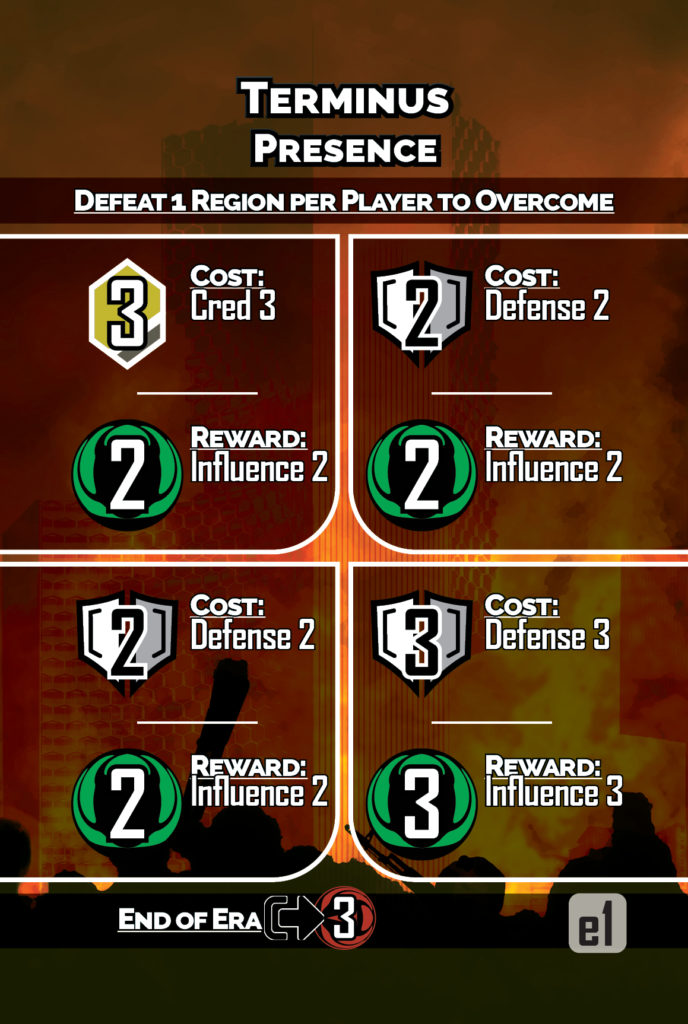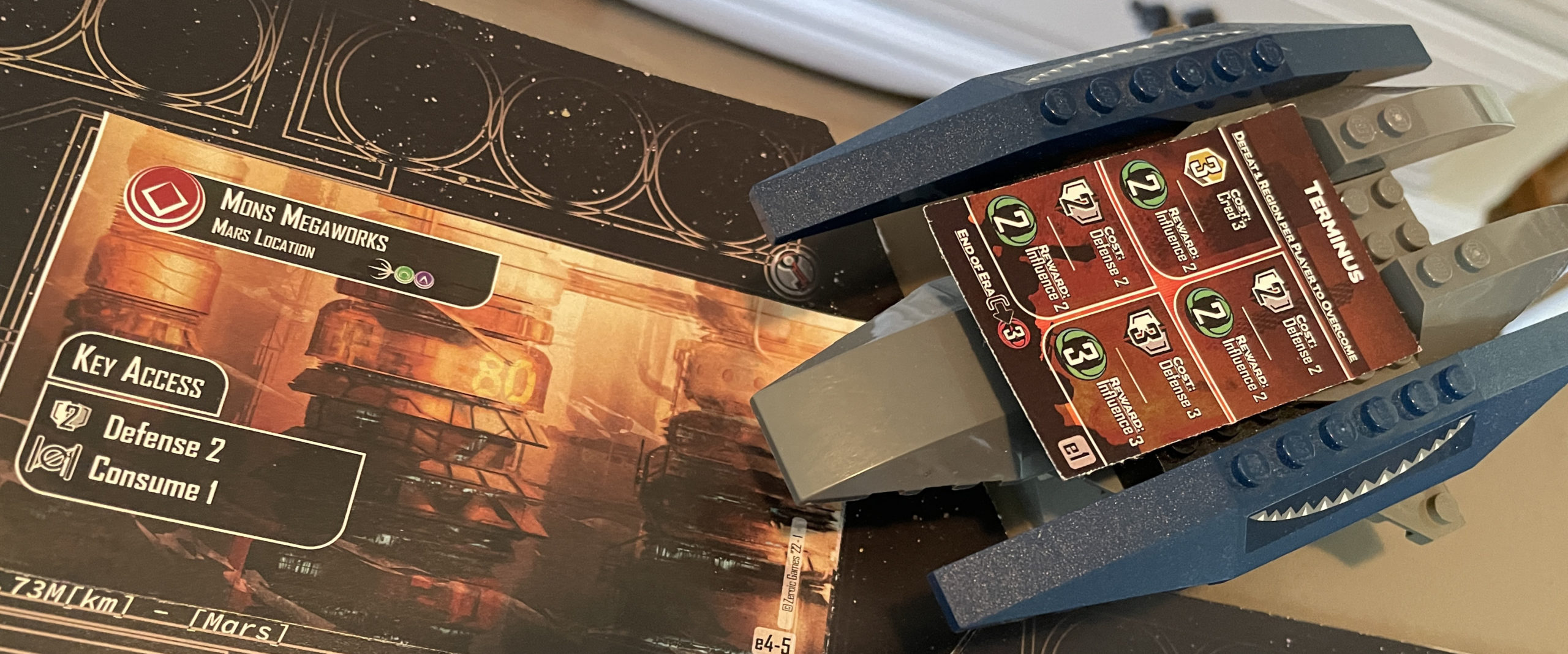How to play a game with everyone who plays your game.
I had some questions recently about how this game is different from other games in the Helionox universe. Seems like a great design diary post to me! First off Helionox: Chronicles (sometimes called HX: C for short) is a stand alone game. That said does draw inspiration from its predecessors. Primarily, this comes in the form of deck building but the way the Architects worked in the past is also similar. Thawing Cryo is one of my favorite mechanics and a core part of the Helionox experience. There are still Events and Locations in the game of course but even there the similarities begin to diverge. After that somethings go in completely different directions.
The biggest difference may be that this is a solo / cooperative game, built as a solo / cooperative game from the ground up. Past HX games started as competitive and developed into a robust solo game. Cooperative was never quite right. There was a variant mode that supported it but, tbh, I wouldn’t recommend it 🙂 Starting with a co-op solo focus allowed me streamline many aspects of the game while preserving the puzzley “flying around the solar system and getting lots of stuff” feeling of the past games. It also put me, as the designer, into the mind of the opponent. I wanted to have the simplicity of the Deluxe Edition Shadow Syndicate with an opponent that felt more like you are sitting with someone at the table. This someone is present in the game and generally working to mess up your hard work. In a very real sense, I want to play Helionox: Chronicles with everyone who plays the game! Since that is a physical impossibility, please accept my proxy self instead. Though not nearly as much personality as my “real self”, I have designed 6 different “proxy selves” (Opponents) for you to face and they certainly have a presence at the table. In fact, each opponent uses a system of 3 different cards, one of which is called the Opponent Presence.

In this image you can see there are 4 different regions. You must defeat 1 Region per player in order to Overcome the Presence of the Opponent. Regions are defeated by paying the cost shown in the region area. When you defeat a region you immediately gain a Reward. In the example shown, you are rewarded with Influence (my thematic name for points scored by the good guys). The other challenging part is that the Opponent Presence will return each Era even if they are Overcome in a previous Era. An Era is a measurement of time passing in the game. Essentially, you can play cards and take actions during an Era until you run of things to do. You don’t get new cards or Thaw Cryo until the beginning of a new Era. You can see from the card image that if the Opponent Presence is still in play at the End of the Era, the Opponent will score 3 Infamy (my thematic name for points scored by the bad guys). This isn’t a terrible penalty but it does add up over the Eras.
What makes this more interesting (and more difficult) is that the presence may move to different locations at various points throughout an Era. In my prototype, I place the Opponent Presence onto a ship I built from Legos. This makes it easy to pick up and move the Opponent around. Not sure what the actual component will be for this but it won’t be Legos (if only!).

So why is this important to game play? What’s interesting here (and much different than other HX games) is that each time the Opponent moves to a new Location it Devastates that location. Devastation is a mechanic that represents the Opponent or the Events in the game wreaking havoc across the solar system. If you played the Deluxe Edition or the Last Sunset, you may remember the concept of a Location getting “Shut Down”. Devastation is similar but is much more interactive and it can affect the Market as well. You can remove Devastation with Cred or Defense. However, if something is already Devastated and would be Devastated again, Devastation is instead placed on the Opponent Plot card! Remember I mentioned that the Opponents use a system of 3 cards?

This shows you a few things about the Opponent. First, it tells you how the Opponent intends to win. Second, it shows you the Locations that the Opponent will move to when certain game actions trigger an Opponent strike. Third, it shows you how to setup the Event deck for the Episode (more about that in a different post). As Plot Devastation builds up on an Opponent Plot card, bad things can happen if a particular threshold is reached. The Threshold is shown on the third card system in the Opponent system.

In this image you can see the 1 player Threshold card. This Threshold numbers differs by player count, which is why this is on its own card, separate from the Plot card itself. In the 1 player example show, if the Devastation on the Plot ever reaches 5, the Opponent will immediately gain 4 Infamy. Here’s the real Kicker. As mentioned above, each Location and each Market can only hold a single Devastation. When an already Devastated Location or Market would be Devastated again, two Devastation is placed on the Plot card instead. Two Devastation instead of one! Not good! Your job is to keep the Locations and Markets clear of Devastation but it won’t be easy as the Opponent works tirelessly to undo all of your hard work – and guess what?! – there are still Events! Some are caused by the Opponents doing their heinous things. Some are caused by the mounting fear revolving around the threat of the mysterious Helionox. Some are even directly related to solar cataclysms, the likes of which our system has never endured….
Of course all of this is only the beginning. Shown in this post is all of the Opponent parts for Episode 1. Each Episode will have a different Opponent. What’s an Episode you ask? In my next post I will continue to discuss the major differences between Chronicles and other games set in this universe by introducing Episodes which are part of a Campaign system complete with unlockable components, asymmetric starting builds, and essentially infinite replayability…
Ok that’s a lot of information. That’s the tough thing about these Design Diary posts. They are all about the stuff I’m working on but I’d love to hear about design decisions or games that you are working on. Got some cool solo or co-op mechanics you’ve been grinding away at? Want to write a post about it for this blog? I’m always looking for good insightful entries ! Until next time – may your sun shine bright, just not too bright…


Looking good Taran, keep it up. Have you thought up any fun names for the opponents? That might be an entertaining exercise during the Kickstarter!
Thanks! I do have names picked out for the opponents but I think you are right. We need to get some community involvement with the bad guys just a little bit 🙂 I probably need to name the Opponent Plots (which I haven’t done) and maybe even see if anyone wants to write some back stories for them!